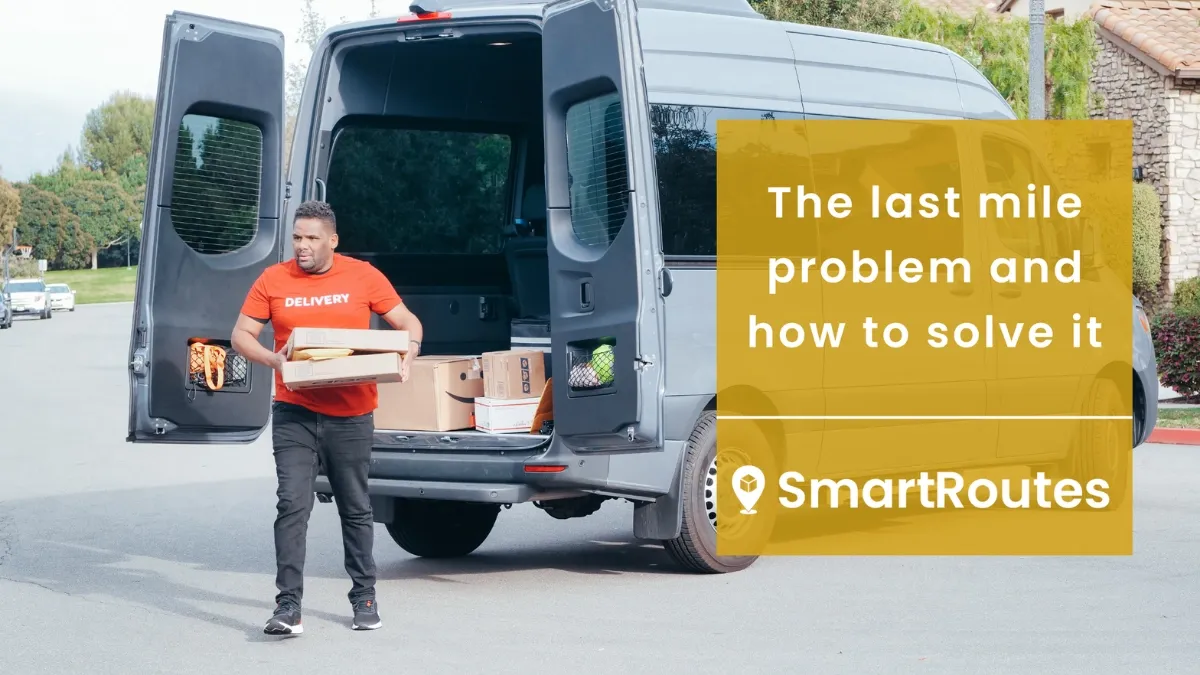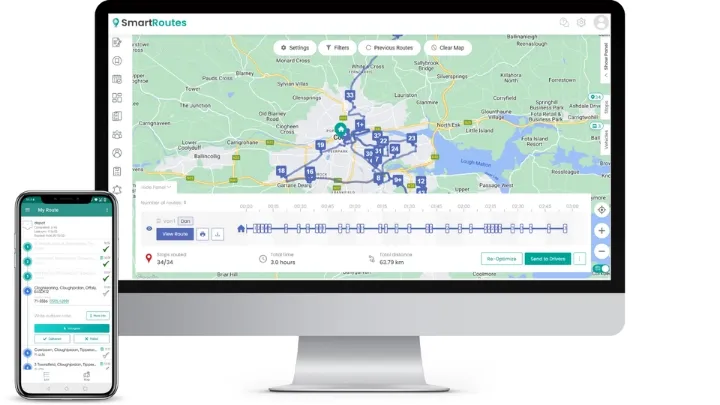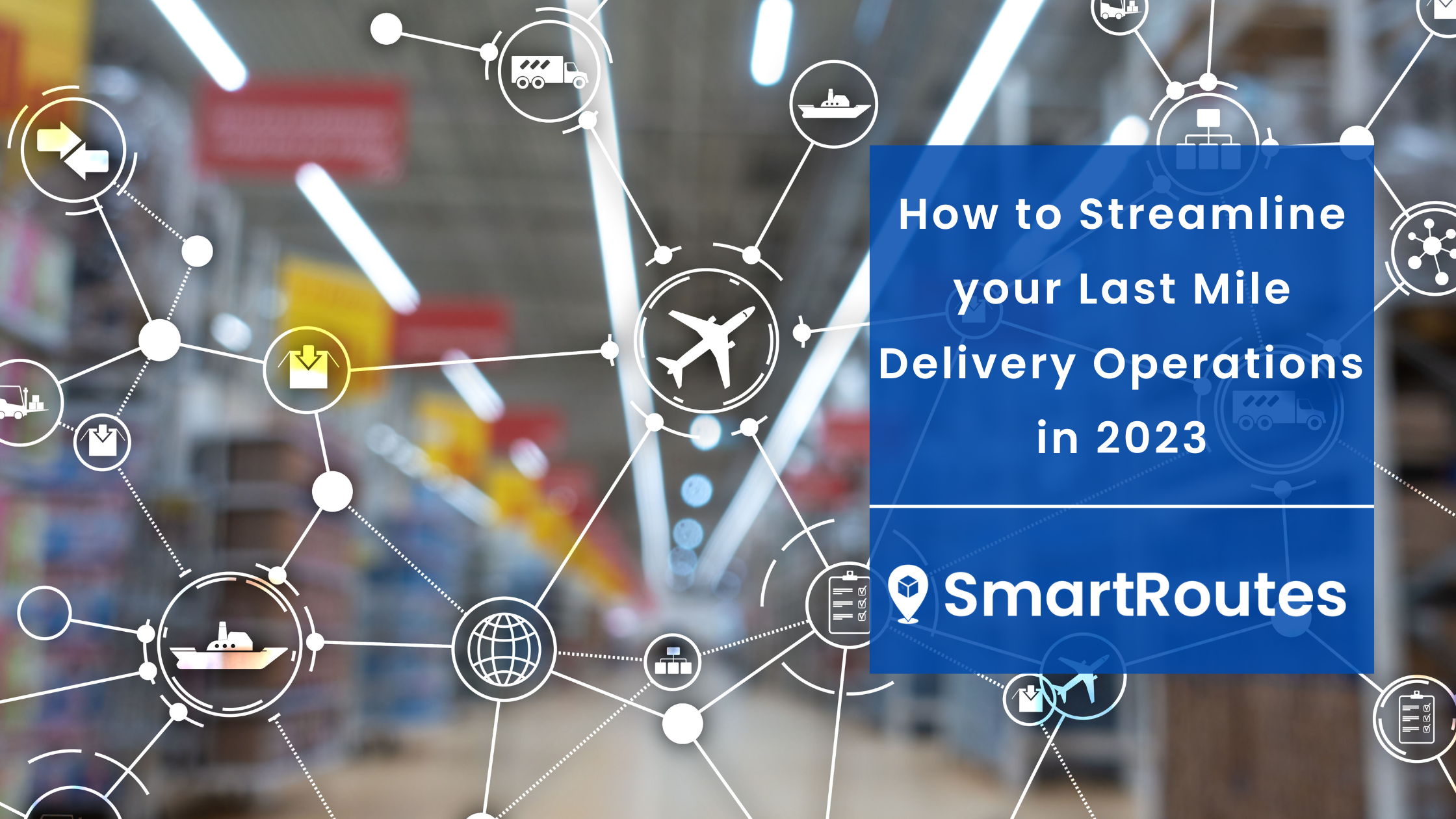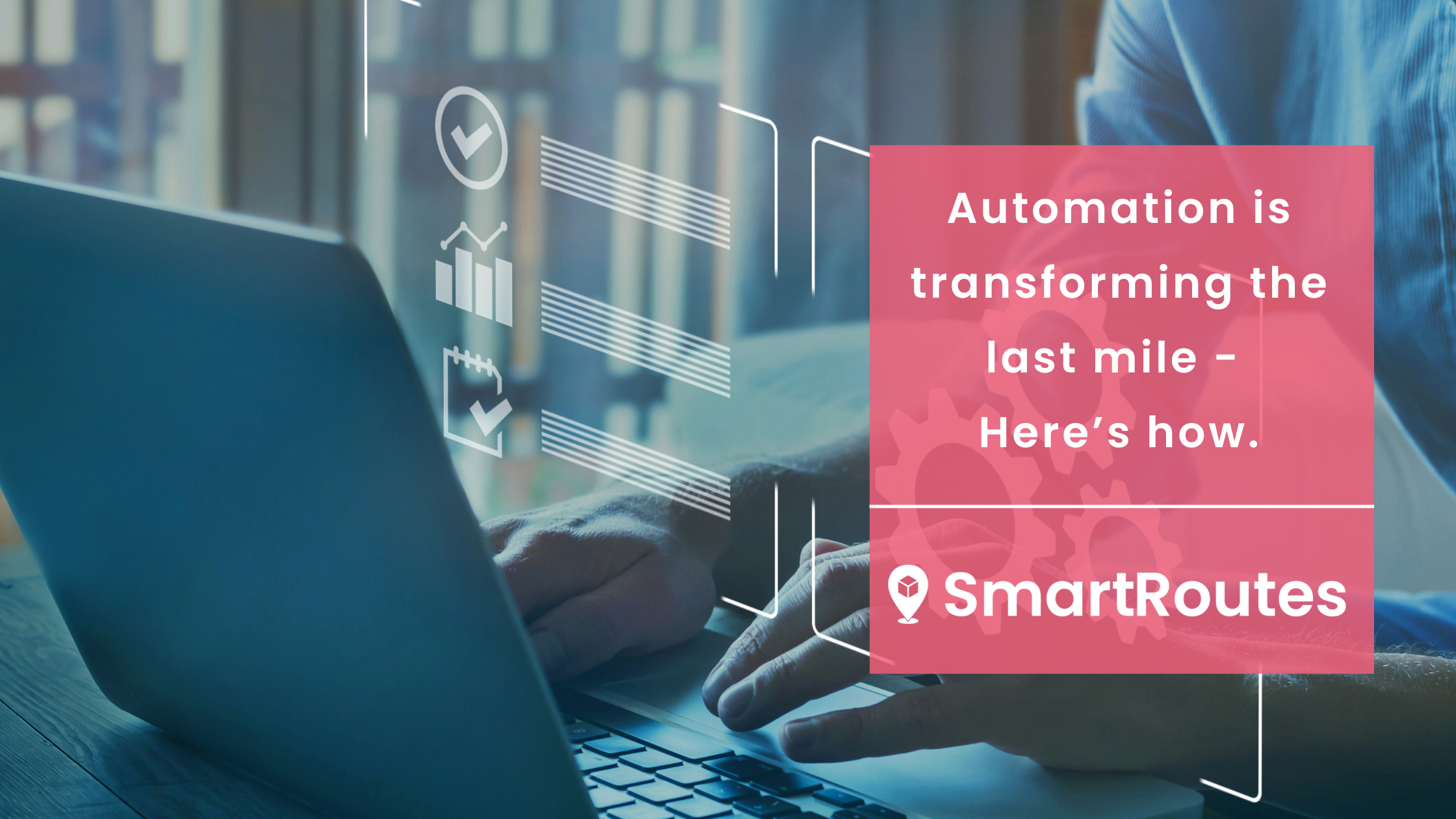The last mile problem and how to solve it for your business
In this guide we will look at the challenges presented by last mile delivery and how last mile delivery software can solve them.

The last mile problem is one of the most significant challenges in logistics and supply chain management today. Last-mile delivery accounts for up to 53% of the total delivery cost, and 41% of customers would switch to a competitor if a retailer fails to offer a satisfactory delivery experience.
In the fast-paced and highly competitive e-commerce landscape, solving this issue has become more critical than ever. With the rapid growth of online shopping, the demand for fast, reliable, and affordable deliveries has increased significantly. However, businesses that fail to address the last mile problem can face significant consequences, such as reduced customer satisfaction, increased delivery costs, and lost sales.
In this article, we'll explore the last mile problem in detail and provide practical solutions to help businesses overcome this challenge and succeed in today's competitive marketplace.
In this blog we will take an indepth look into the following:
What is the Last Mile Problem?
The challenges in last-mile delivery
What happens if I get last mile challenges wrong?
4 ways to solve the last mile delivery problem
What is the Last Mile Problem?
The last mile problem is a significant challenge for businesses involved in the logistics and supply chain management industry. There are several reasons why the final mile can be difficult to navigate. For example, delivering to densely populated urban areas can be challenging due to traffic congestion, parking restrictions, and complex delivery routes. Similarly, delivering to rural areas can be challenging due to long distances between destinations and poor infrastructure.
The last mile issue can have significant consequences for businesses. Customers expect fast, reliable, and affordable deliveries, and failure to meet these expectations can result in reduced customer satisfaction and increased costs.
SmartRoutes Route Planning Software
Streamline your entire delivery process, all from one platform

The challenges in last-mile delivery
Transportation costs
Last mile delivery has always been the least efficient leg of the supply chain. Compared to sea shipping or long haulage which are simple A to B routes and include huge economies of scale, last mile is just very difficult to do. Last mile means dealing with traffic, customers that are not home, a mix of big and small items, perishable and non-perishables, and a diverse range of stops in rural and urban environments. Delivering goods to remote or rural areas can be expensive, requiring additional resources and specialized equipment. Similarly, delivering goods to densely populated urban areas can be challenging due to traffic congestion and complex delivery routes, increasing transportation costs and time spent on the road. Transport costs are very high on commercial vehicles with tax, fuel, driver wages and so on ramping up the cost every time a delivery is missed or the driver is stuck idling in traffic.
Resource constraints
Depending on which country you are in last mile resources are being stretched more and more. Whether it is a crisis around drivers leaving the industry because of poor conditions or being poached by the big operators like Amazon, driver shortages are the big topic. Add to that a shortage of delivery vehicles with supply chain issues worldwide meaning new vehicles have long wait times and even used vehicles can be hard to come by with so many micro-businesses using them to meet their online orders. Finally, the ability to outsource to bigger courier companies and logistics providers is becoming difficult also as they are charging more for their services, often cutting into tight margins so much that the operation becomes unprofitable.
Consumer expectations
Expectations for fast and cheap shipping have never been higher making the last mile even more difficult and costly for businesses to coordinate successfully.
Consumer expectations are growing fast around deliveries. For younger cohorts same day delivery and full visibility on the package location in real time are must-haves. For 90% of consumers they expect delivery within 3 days! These demands are being met by the likes of Amazon and it means that others have to follow suit if they are not to have their business undercut by the online giant.
What happens if I get last mile challenges wrong?
Higher operating costs
If you don’t manage your last mile challenges correctly, your costs can grow very quickly. If you decide not to optimize routes, use fuel inefficient vehicles, not control driver’s actions and so on you can expect your profit margin to come under serious strain.
Poor customer experiences
Amazon, FedEx and others have raised the bar for customers who now expect super fast delivery from anyone that they are buying from online. You need to be accurate with ETAs and your drivers need to be brand representatives for you. Anything short of this will be catastrophic for your business.
PWC research indicates 32% of worldwide customers would not shop with their favourite brand again if the delivery experience was poor. That means you lose all of your customers in a 3 month period if you have consistently poor delivery systems. Customers expect fast delivery and total communication on where the package is at all times.
4 ways to solve the last mile delivery problem
Businesses can address the last mile problem by implementing several solutions to optimize their delivery processes. In this section, we'll explore some of the most effective solutions:
1. Optimizing Delivery Routes and Vehicle Routing
Optimizing delivery routes and vehicle routing is crucial in addressing the last mile problem. By identifying the most efficient delivery routes, businesses can reduce transportation costs, improve delivery times, and increase overall efficiency. Utilizing route optimization software can help businesses achieve these goals.
Indirect routes are responsible for huge slowdowns during the last mile, as well as increased fuel costs and idling. Applying an intelligent algorithm to your routes is transformative. SmartRoutes’ route optimization software for example can help businesses identify the most efficient delivery routes based on various factors such as traffic, vehicle capacity and time constraints. So many factors go into creating the optimal route and these factors will add up to between 20 and 40% saving in miles driven depending on how inefficient your operations were when using a manual planning system.

But it doesn’t stop there. Operational weaknesses come into clear focus once a route optimizer is employed. The map view of vehicles moving around their routes reveals overlapping routes, deviations, anomalies in catchment areas that can hugely change the way you think about the areas that you serve. At its best, route optimization can save 50% on operational costs made up of fuel savings, greater customer retention, driver turnover and, of course, salary costs of drivers and planners. Not to be taken lightly.
2. Using Innovative Technology and Automation
Innovative technology and automation can play a significant role in addressing this problem. By streamlining last mile delivery processes, businesses can reduce costs and improve efficiency. Utilizing delivery tracking software can help businesses track their deliveries in real-time, providing customers with accurate delivery times and improving communication.
Delivery tracking software can help businesses track their deliveries from start to finish. The software provides real-time updates on the delivery status, including the current location of the driver and estimated delivery times. This information is shared with customers, improving their delivery experience and reducing the likelihood of missed or delayed deliveries.
Delivery software solutions also includes automation features that can further streamline the last mile delivery process. For example, businesses can use the software to automatically send notifications to customers about their delivery status or to generate and send delivery confirmation emails.
3. Distributed fulfilment centres
Utilizing local distribution centers can help businesses reduce transportation costs and improve delivery times. By storing inventory closer to the end customer, businesses can reduce the distance traveled during the last mile delivery, resulting in faster and more efficient deliveries.
The use of local distribution centers can also help businesses better manage inventory levels and reduce the likelihood of stockouts. Rather than storing inventory in one central location, businesses can distribute their inventory across multiple local distribution centers, allowing them to better meet customer demand and reduce delivery times.
In addition, local distribution centers can also provide businesses with more flexibility in their delivery options. For example, businesses can offer same-day or next-day delivery options by utilizing local distribution centers strategically placed in key geographic locations.
4. Delivery fleet tracking
Delivery fleet tracking is a crucial component of last mile logistics. By utilizing real-time tracking software, businesses can monitor their delivery vehicles, track delivery progress, and optimize delivery routes. Delivery fleet tracking software can also help businesses identify potential issues, such as traffic or weather delays, and adjust delivery routes accordingly.
SmartRoutes delivery fleet tracking software is designed to help businesses optimize their last mile delivery processes. Our software solution provides real-time tracking of delivery vehicles, allowing businesses to monitor their deliveries and optimize their routes for maximum efficiency. With our delivery fleet tracking software, businesses can reduce transportation costs, improve delivery times, and provide customers with better overall experiences.
Need help with last mile delivery software?
At the end of the day, taking action to solve the last mile problem is crucial for the success of any business that relies on last mile delivery. By implementing the right solutions and tools, such as those offered by SmartRoutes, businesses can improve their last mile delivery capabilities, reduce costs, and improve customer satisfaction. So don't wait - try it for free in your business today!
Frequently asked questions
1. What is the last mile problem?
The last mile problem refers to the logistical challenge of delivering goods or services to the end consumer. It's the final phase of the delivery process, typically from a transportation hub to the customer's doorstep. Consumers today expect quick and often free or low-cost delivery, making it increasingly challenging for businesses to optimize this phase efficiently.
2. Why does the last mile take so long?
Several factors contribute to the time-consuming nature of the last mile. Complexities arise due to multiple delivery points, traffic congestion, unpredictable weather conditions, and the need for meticulous planning to ensure accurate and timely deliveries. Additionally, individual customer preferences and scheduling constraints further complicate the process, causing potential delays.
3. Why is the last mile the most expensive part of the process?
The last mile tends to be the most costly phase due to various factors. These include high labor expenses associated with individual deliveries, fuel costs, vehicle maintenance, the need for specialized equipment, and the challenges of optimizing routes efficiently. The requirement for prompt, often same-day or next-day delivery further adds to the expenses, making the last mile the most financially burdensome aspect of the entire delivery process.
4. What are some common solutions to overcome the last mile problem?
Businesses employ various strategies to tackle the last mile challenge. One common solution is the utilization of advanced technology, such as route optimization software, GPS tracking, and real-time analytics. Companies also explore alternative delivery methods like local distribution centers, crowdshipping, or the integration of autonomous vehicles and drones. Additionally, smart packaging and leveraging existing delivery networks are among the approaches adopted to streamline and optimize the last mile delivery process. These solutions aim to reduce costs, improve efficiency, and meet customer demands effectively.
If you liked this blog you may also be interested in:







